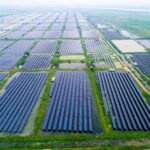Introduction
Remember when you first installed your solar system, filled with excitement and anticipation? For some, everything works perfectly right off the bat. But for many others, the initial setup can come with its own set of challenges, especially when it comes to the PV string combiner box. If you’re dealing with issues, don’t worry—you’re not alone. This guide will walk you through some common problems and solutions to get your solar system running smoothly.
Safety First
Before diving into troubleshooting, it’s crucial to take some safety precautions. Think of it as wearing a helmet before riding a bike – it’s just smart.
- Turn off all power: Ensure the system is completely powered down. You wouldn’t want to get zapped, right?
- Wear proper safety gear: Gloves, goggles, and insulated tools are essential. No one looks cool with a burnt hand.
- Follow local regulations: Always adhere to safety standards and guidelines. It’s like reading the manual before assembling IKEA furniture – you might not want to, but you’ll be glad you did.
Common Issues and Solutions
Let’s get into the nitty-gritty, shall we? Here are some common problems you might encounter with your PV string combiner box and how to fix them.
1. No Output from the Combiner Box
Nothing can be more frustrating than setting up your solar system and getting no output. It’s like making a sandwich only to find out you’re out of bread.
Possible Causes:
- Blown fuses
- Faulty connections
Troubleshooting Steps:
- Check fuses: Look for blown fuses and replace them if necessary. It’s often the simplest solutions that save the day.
- Inspect connections: Ensure all wires are securely connected and there are no loose terminals. Loose wires are like loose ends in a mystery novel – they lead to trouble.
2. Uneven Output from Strings
If you’re seeing uneven output from your solar strings, it’s like having one tire on your car significantly under-inflated – things just won’t run smoothly.
Possible Causes:
- Shading on panels
- Panel degradation
Troubleshooting Steps:
- Inspect panels: Check if any panels are shaded or dirty. Clean them if needed. Panels need sunlight just like we need coffee in the morning.
- Check for degradation: Measure the output of each string and compare it with the expected output. If one string is lagging behind, it might be time for a replacement.
3. Overheating
Overheating can be a serious issue. It’s like your laptop running hot during a Netflix binge – you know something’s not right.
Possible Causes:
- Poor ventilation
- High ambient temperature
Troubleshooting Steps:
- Improve ventilation: Ensure the combiner box has adequate airflow. Sometimes all it takes is moving things around a bit.
- Check temperature ratings: Make sure the components are rated for the ambient temperature. Components that can’t handle the heat need to get out of the solar kitchen.
Data Points
To give you some context, let’s look at some data from a 2023 survey by the Solar Energy Industries Association (SEIA):
- 25% of solar system issues are related to combiner boxes.
- 40% of these issues are due to blown fuses.
- **35% are caused by poor connections.
These numbers highlight how common these problems are and why it’s essential to know how to troubleshoot them.
Advanced Troubleshooting Tips
Alright, let’s move on to some more advanced troubleshooting tips. These are for those who feel comfortable with the basics and want to dig a little deeper.
4. Ground Faults
Ground faults can be tricky and dangerous if not handled properly. Think of it as electrical whack-a-mole – you think you’ve solved one problem only for another to pop up.
Possible Causes:
- Damaged insulation on wires
- Moisture ingress
Troubleshooting Steps:
- Inspect wiring: Look for any damage to the insulation on wires. Replace any damaged sections immediately.
- Check for moisture: Ensure that all connections are dry and that the combiner box is sealed properly against water ingress.
5. Inconsistent Voltage
If you’re seeing inconsistent voltage levels, it’s like trying to bake cookies with an oven that keeps changing temperature – frustrating and ineffective.
Possible Causes:
- Faulty diodes
- Inconsistent panel performance
Troubleshooting Steps:
- Test diodes: Check if diodes in the combiner box are functioning correctly. Replace any faulty ones.
- Evaluate panel performance: Make sure all panels are performing consistently. A single underperforming panel can throw off the whole system.
Personal Touch
I remember when I first started working with solar systems. One of my biggest challenges was figuring out why a combiner box wasn’t working. Turns out, it was just a couple of loose wires! Simple fixes can sometimes save a lot of headaches.
Imagine my relief when I found out it was something so minor. It was like discovering your car won’t start because it’s out of gas, not because the engine is shot.
If you found these tips helpful, don’t keep them to yourself! Share this post with your friends and colleagues who might be wrestling with solar issues. And, if you’re looking for more in-depth guides on solar power, sign up for our newsletter. Let’s harness the sun’s energy together!



